| Bath owes its origin and ultimately its name to the springs which produce about five hundred thousand gallons of water a day at 120 degrees Fahrenheit. During the first century C. E. the Romans turned this backward village into a fashionable spa dedicated to the goddess Sulis Minerva, from which the city took its Roman name: Aquae Sulis. Near the hot spring which feeds the baths there was a temple dedicated to Sulis Minerva where pilgrims came to pray to that goddess when seeking cures, before bathing in the sacred waters. |
| |
|
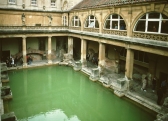 |
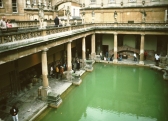 |
The Great Bath from aboveThe Great Bath is 80' x 40' x 6' deep. |
| |
|
The Great Bath at floor levelThis bath originally had a vaulted roof. |
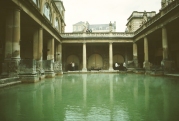 |
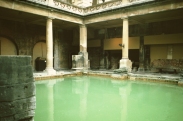 |
| |
|
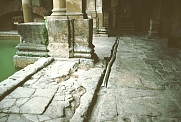 |
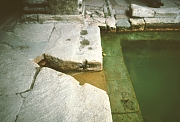 |
Left: portion of the lead conduit laid down during Roman times. |
| |
|
 |
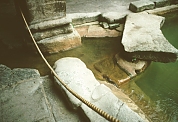 |
This channel led from the Sacred Spring which fed the Great Bath. |


 Click here to return to index of art historical sites.
Click here to return to index of art historical sites.
 Click here to return to index of artists and architects.
Click here to return to index of artists and architects.
 Click here to return to chronological index.
Click here to return to chronological index.
